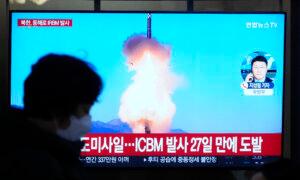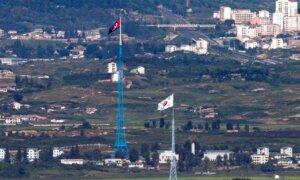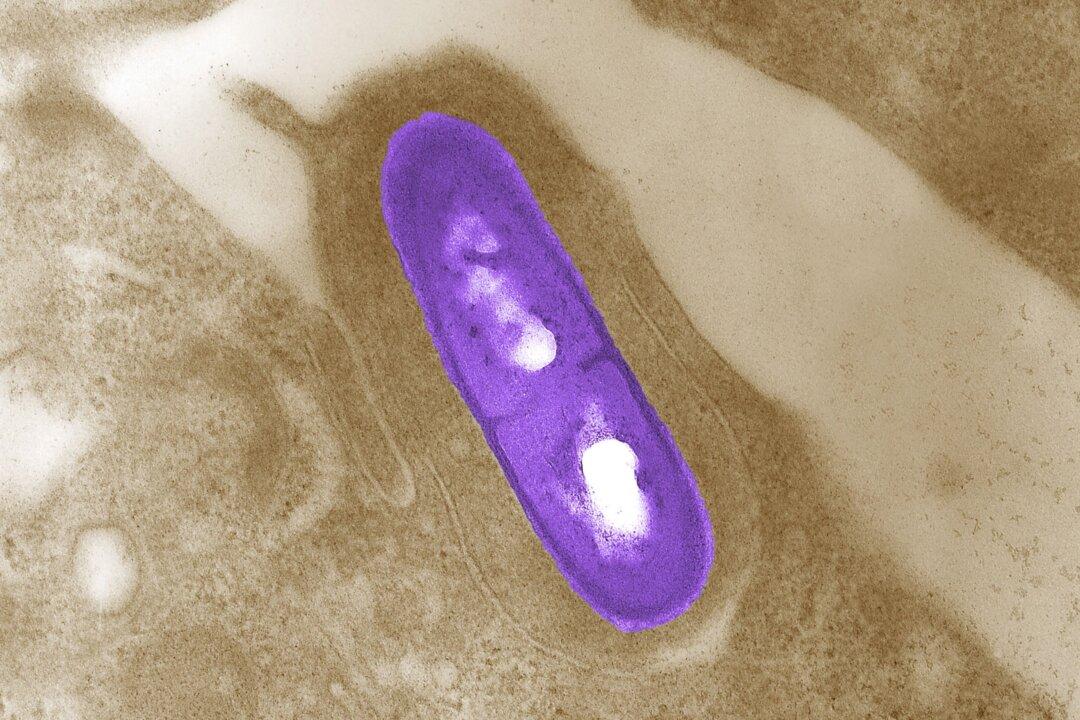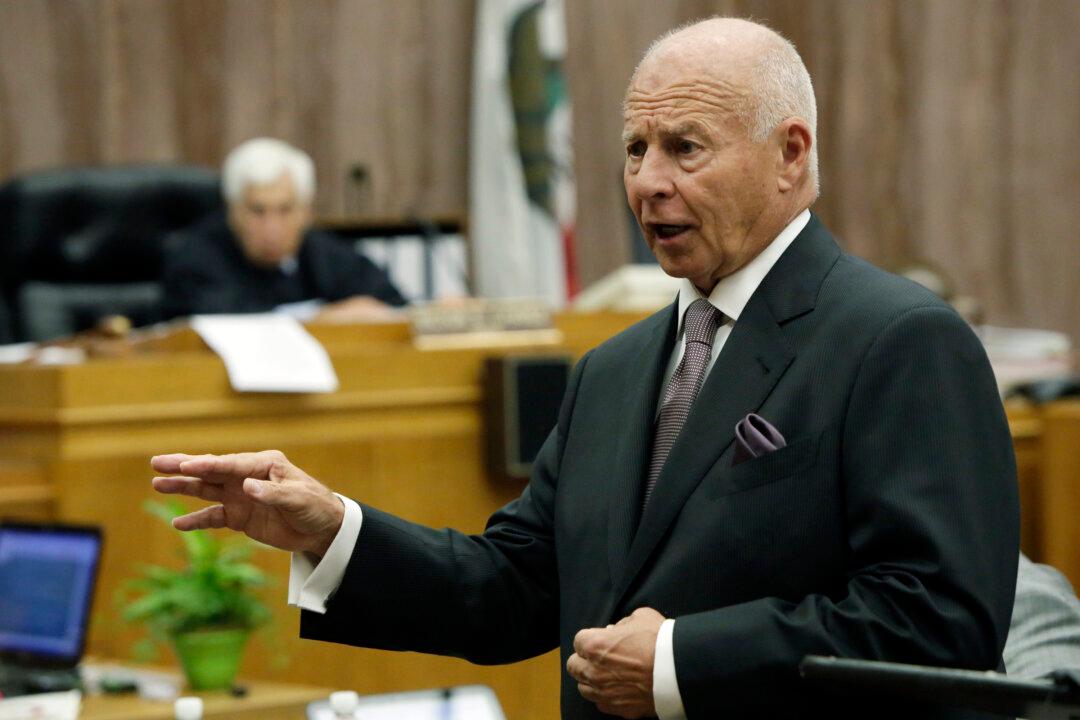North Korea reported yet another missile test from its launch site near its capital, Pyongyang, on Jan. 15. It involved a new solid-fuel intermediate-range missile tipped with a hypersonic warhead.
The news comes amid ongoing tension between North Korea and the West, as the communist country aims to demonstrate its ballistic missile capabilities in an attempt to assert dominance in the region through the deployment of more powerful and harder-to-detect weapons.
North Korea’s state media reported the launch, the country’s first ballistic test of 2024, after it was detected by South Korean and Japanese militaries the day before. It follows a successful solid-fuel intermediate-range ballistic missile launch two months prior, as North Korea gears up to target U.S. military bases in Guam and Japan.
The launch, designed to perform intermediate-range strikes, was an upgrade from previous launches, according to North Korea’s Central News Agency, which stated that the test served to verify the solid-fuel engine’s reliability as well as the maneuverable flight capabilities of the hypersonic warhead.
While the test was reportedly a success, state-run media failed to provide further details, including whether it was attended by North Korean leader Kim Jong Un. All it divulged was that it was part of the country’s routine weapons development activities and posed no threat to its neighbors’ security.
According to South Korea’s Joint Chiefs of Staff, the missile touched down in waters between the Korean Peninsula and Japan after flying for about 600 miles. North Korea’s current arsenal, which comprises intermediate-range ballistic missiles (IRBMs), including the Hwasong-12, capable of reaching the U.S. military hub of Guam in the Pacific, is powered by shorter-range liquid-fuel engines.
Missiles with built-in solid propellants can be made ready to launch faster and are easier to move and conceal, which makes them theoretically harder to detect and intercept.
Since 2021, North Korea has also been testing more capable hypersonic weapons, which are designed to exceed five times the speed of sound. These could pose a serious threat to regional missile defense systems because of their speed and maneuverability, although their consistency remains in question.
Chang Young-keun, a missile expert at South Korea’s Research Institute for National Strategy, said North Korea’s latest show of force is aimed at simultaneously trying to advance its hypersonic weapons and develop solid-fuel IRBMs as potential delivery systems.
However, the most recent launch would have been more likely aimed at evaluating the missile’s solid-fuel first stage, he said.
“In particular, a hypersonic missile with IRBM-level range would be an effective means for evading U.S. missile defenses and striking Guam,” Mr. Chang said.
The most recent missile launch will likely be followed by more flight tests, which is cause for concern for neighboring countries.
While North Korea’s largest missiles were fired straight up into the air, avoiding neighboring territory, the country’s new solid-fuel missile will likely be launched at a normal ballistic trajectory when testing it with a hypersonic warhead in the future.
According to Kim Dong-yub, a professor at the University of North Korean Studies in Seoul, this would enable North Korea to verify the vehicle’s ability to glide and maneuver at desired speeds following separation from the booster.
Since 2017, North Korea has tested Hwasong-12 IRBM flights over Japanese territory on three separate occasions. North Korea’s latest test is currently being analyzed by South Korea’s military, according to Lee Sung-joon, spokesperson of South Korea’s Joint Chiefs of Staff, although he provided no further details.
South Korea’s Ministry of National Defense has warned the North against further ballistic testing activities, which it says violate U.N. Security Council resolutions. The ministry further stated that its military stands firm with its U.S. allies and is ready to jointly defend itself against any future provocation by the North Korean regime.
Hypersonic weapons remain a long-term goal for North Korean leader Kim Jong Un, who in 2021 unveiled a sophisticated military arsenal including multi-warhead missiles, spy satellites, solid-fuel intercontinental ballistic missiles (ICBMs), and submarine-launched nuclear missiles.
This was topped by last year’s test of a solid-fuel Hwasong-18 ICBM, which added to the country’s arsenal of weapons capable of reaching the U.S. mainland, as well as the launch of its first military reconnaissance satellite in November 2023.
The country is planning three more satellite launches in 2024, which Kim described as a crucial step to monitor military activities by the United States and South Korea while enhancing the threat of its own nuclear-capable missiles.
The United States, along with allies Japan and South Korea, meanwhile, responded by reinforcing their combined military exercises, including nuclear deterrence strategies, as tensions on the Korean peninsula have reached a pinnacle.
Moreover, alleged arms deals between North Korea and Russia have been cause for more concern.
The recent arrival of a North Korean delegation led by Kim’s foreign minister, Choe Son Hui, on Jan. 14, at the invitation of Russian Foreign Minister Sergey Lavrov, has confirmed deeper collaboration between the two nations, amid speculation about possible motives for the visit, which currently remain undisclosed, KCNA reported.
According to the U.S. and South Korean governments, North Korea has been providing Russia with military inventory for the purpose of extending Russia’s invasion of Ukraine. This is based on evidence obtained by the Biden administration, which states that North Korean missiles were used in Russia’s war effort with Ukraine.
The allies issued a joint statement last week, confirming their position regarding the weapons transfer, which they say supports Russia’s war of aggression while providing North Korea with valuable technical and military insights.
Meanwhile, Koo Byoungsam, spokesperson of South Korea’s Unification Ministry, said Ms. Choe’s visit to Russia will be monitored closely, amid allegations of illegal cooperation. The scrutiny follows Kim’s visit to Russia in September 2023, when he met for a summit with Russian President Vladimir Putin.
When asked whether Ms. Choe could be working to set up a Putin visit to North Korea, Ms. Choe provided no specific answer.
Although both Moscow and Pyongyang have denied any accusations about North Korean arms transfers to Russia, some experts say it could be part of a tactic to exert pressure on Seoul and Washington, both of which have upcoming elections this year.
North Korea’s most recent flight tests come shortly after artillery strikes near the disputed western sea boundary earlier this month, which prompted retaliation by the South. During a political conference last week, Kim referred to both the United States and South Korea as principal enemies that should be “thoroughly annihilated” in the event of what he called further provocation.






